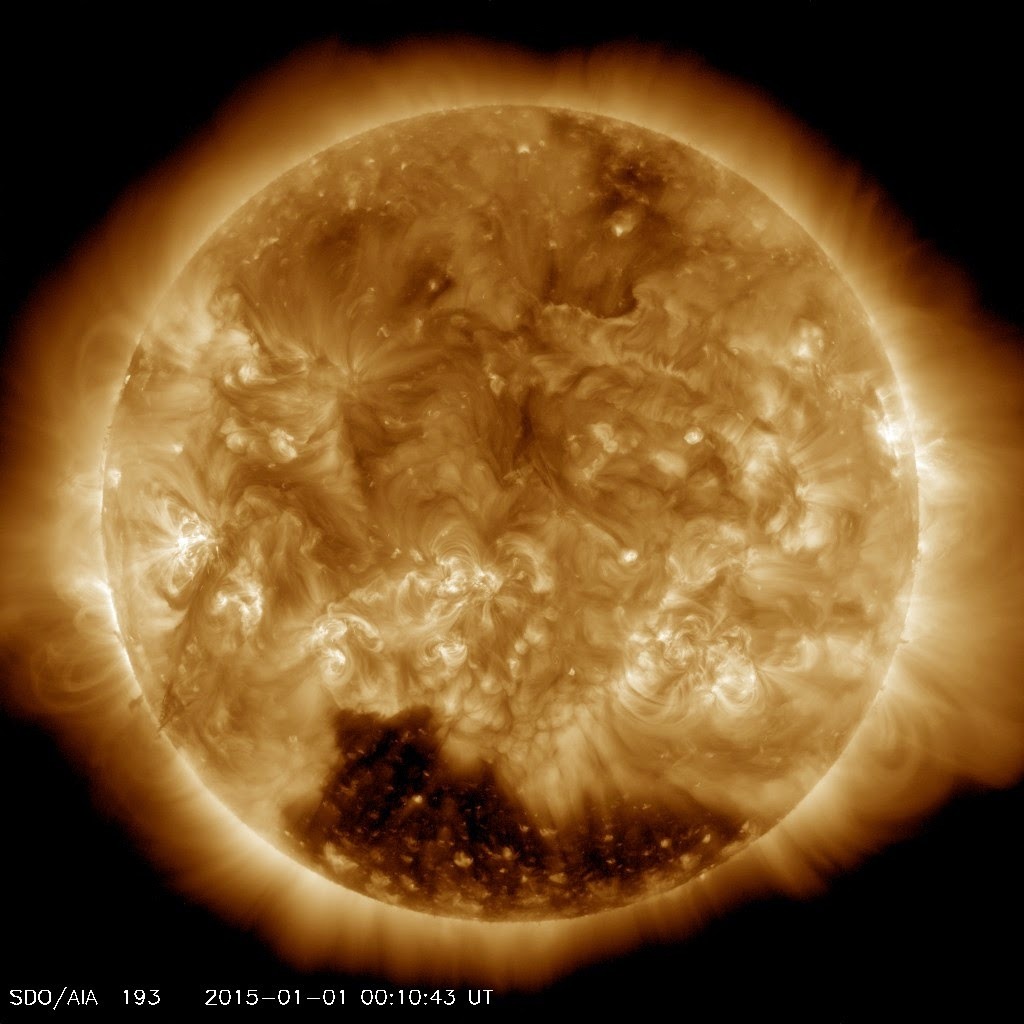Nasa Reveals Huge Coronal Hole Where Winds Reach 500 Miles Per Second
There were no fireworks on the sun to welcome in the New Year and only a few C-class flares during the last day of 2014. Instead, the sun starts 2015 with an enormous coronal hole near the south pole. This image, captured on Jan. 1, 2015 by the Atmospheric Imaging Assembly (AIA) instrument on NASA’s Solar Dynamics Observatory, shows the coronal hole as a dark region in the south.
Coronal holes are regions of the corona where the magnetic field reaches out into space rather than looping back down onto the surface. Particles moving along those magnetic fields can leave the sun rather than being trapped near the surface. Those trapped particles can heat up and glow, giving us the lovely AIA images. In the parts of the corona where the particles leave the sun, the glow is much dimmer and the coronal hole looks dark.
Coronal holes were first seen in images taken by astronauts on board NASA’s Skylab space station in 1973 and 1974. They can be seen for a long time, although the exact shape changes all the time. The polar coronal hole can remain visible for five years or longer. Each time a coronal hole rotates by the Earth we can measure the particles flowing out of the hole as a high-speed stream, another source of space weather.
Charged particles in the Earth’s radiation belts are accelerated when the high-speed stream runs into the Earth’s magnetosphere. The acceleration of particles in the magnetosphere is studied by NASA’s Van Allen Probes mission.
As Solar Cycle 24 fades, the number of flares each day will get smaller, but the coronal holes provide another source of space weather that needs to be understood and predicted.
Source
Image Credit: NASA/SDO
Caption: Dean Pesnell
From exploratorium.edu
Coronal holes make for a gusty solar wind. For example, the solar wind usually leaves the sun at speeds of around 250 miles (400 kilometers) per second, but solar wind leaving through the center of a coronal hole travels much faster, up to 500 miles (800 kilometers) per second. When these solar wind particles reach the earth—which takes two to four days, depending on their speed—modest geomagnetic storms can result. High-speed wind gusts can also disturb satellites in earth orbit.
Video: Extended Coronal Hole
he most dominant feature on the Sun the past week has been quite a large, dark coronal hole at the bottom of the Sun (Nov. 30 – Dec. 4, 2014). Coronal hole are areas where the Sun’s magnetic field is open ended and where high-speed solar wind streams into space. The area appears darker there because there is less material being imaged in this wavelength of extreme ultraviolet. At its widest point, the hole extends more than 50 times the size of Earth. The video covers almost five days of activity. Credit: Solar Dynamics Observatory, NASA.

